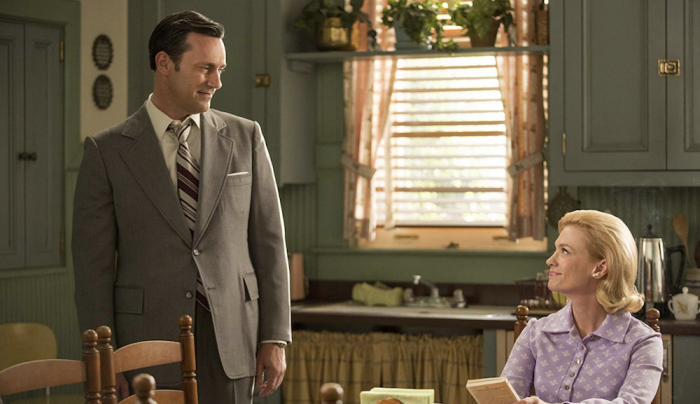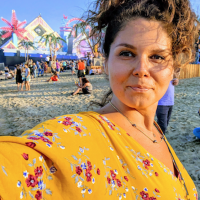Western society has created an exceeding amount of solutions to a seemingly taboo human condition: anger.
That’s not to say these solutions aren’t established on sound principles. But when did the process of healthy anger become such a flaccid thing?
I’ve learned more about how to “cope” with my anger than I have how to properly express it.
In my process of conscious self-actualization, I love to go on five-mile hikes, do yoga, make art, and learn about my triggers and how to be responsible for my own imbalances. But one thing that has both terrified and fascinated me is the sheer magnitude of some people’s ability to express anger, and for this reason, I knew there was something in it for me.
Since I was little, I lived in a “well-kept” household, where the only displays (if any) of emotional outburst or emotional control over the environment were left for the adults. Crying, anger, and objection, for one reason or another, felt like unsafe and discredited ways of acting as a young girl. So the focus went inward, and any aggressive feelings or thoughts became a muted introspection period by the time I was in elementary school.
It’s not surprising that by that time, an inability to cope with bullying at school also set in, so I began binge eating as well. By the time I was in high school, I weighed just a bit over 310 pounds, and general feelings of fear, dread, and anxiety were always (secretly) looming within. I had perfectly adorned my face with being the “funny girl” and making sure as many people as possible accepted me. But when I was alone, I was dull, dim, passive, and regrettably self-loathing.
Fast-forward roughly 15 years. After a series of tumultuous relationships (as well as being 130 pounds lighter), which, in retrospect, worked as my training wheels in being “seen,” and getting to know how to communicate my feelings, dislikes, and objections, I’ve finally learned that there is a balance in expressing my anger that is necessary for setting my creative and self-actualized self free.
For so long, I had a subconscious fear of authority and being a “bad person” or doing things wrong, so the fear is what had me bottle up this anger and inadvertently turn it in on myself. Coupled with that, I was incredibly insecure about sharing my feelings and expression, or my latent talent and passions. Good luck finding me telling a boy I liked him back then! Or saying I wanted to audition for a singing performance. Or putting a hand out to people who I really admired to become their friends. Good. Luck.
Now, after years of tumultuous trial and error, I’ve learned five keys to my personal expression of anger and how this fascinating thing became my charm to deeper expression and inner illumination:
1. There is a difference between using anger to control other people and using anger to control myself.
My anger was never meant to be a tool to control my environment or the people in it as the primary focus. This intensity was something I grappled with in many relationships, because ultimately I was fearful of the people or environment I was in. I tried to control those feelings of vulnerability by using anger to control the external. This exhausting process was manipulative, self-destructive, and limiting.
A light bulb switched on when I realized that my anger was being used in destructive ways only because I was not trusting and taking responsibility for my “lesser” feelings. Perhaps also because I was not getting out of situations that were not serving me soon enough.
However, when the external (as it does) attempted to encroach itself on my well-being, this was a different story, and I learned that this was when the anger was meant for. If boundaries of respect or emotional autonomy were being crossed, and my peace of mind or personal well-being (or well-being of a project) were being demeaned, this was when I was meant to use anger appropriately.
I realized my anger was meant to keep sacred that which was innately sacred, and to clarify the elements in my life that were meant to remain clear. My creativity blossomed from this place because I was only concerned with the elements of a situation that were truly important, and I could continue on with my life and projects without hassle.
2. I don’t have to shun my anger because of family roles.
Oftentimes when I was growing up, I would swallow my anger out of guilt when it came to my family. After all, how can there possibly be boundaries at home?
Being a “good girl” meant not expressing anger toward family, and it went as far as me questioning whether or not being exactly like my family was wrong. Thus, conversations at home would become muddled and drawn out with a lot of time wasted. Boundaries were confusing, I wouldn’t hold my ground, or I would become passive-aggressive. Then, rage would come out in other more inappropriate situations elsewhere, as in friendships or romantic relationships, or, worse, in collaborations.
But as a wise man once said, “Leave the drama for your mama.”
I learned that just because we were blood didn’t mean our social concepts were the same or that my social autonomy was not important. Even at home, I was safe to stand my ground and free to use anger to control myself—versus my environment. To be creatively dynamic meant I had to act on the differences drawn up at home and believe in them.
What’s more, true family will always be family. But I would still have an entire life to live of remembering who I was, drawing on the truth of my creative personality, and not questioning my voice. That foundation would always come from my roots and establishing the patterns there.
3. Being passive aggressive was only hurting me and my creative process.
Somewhere along the way, I learned that passive-aggressiveness was a safe and acceptable way to express anger. It was a deceivingly “quiet, harmless, and acceptable” way to handle personal anger.
I remember what it felt like to sink in to those feelings of passive-aggressiveness and ultimate fear around confrontation. It was a sickening feeling, one where the brush of one eye glance or one defeating thought would silent my voice. I would give all my power away and separate myself from my perceived oppressor (who, of course, was also the answer to my freedom). I would feel limited, and my connection to my eternal creative genius was blocked, as the only thing I could perceive was how a circumstance or person was blocking me and how I had to retaliate, instead of take control of myself and circumstances.
What was going to fuel me was expressing anger to set a boundary (if need be), and continuing to focus on what I love to do—and not feel guilty about it. This was critical in me maintaining my energy levels to successfully push my life and projects forward.
Looking back, I find it charming that passive-aggressiveness was ever a learned first responder for its perceived tranquility. Since diving in to these emotions, I’ve realized how untrue that really was, and how much more the passive-aggressiveness was disturbing things internally in a loud way.
It became better to express the healthy anger and hold on until things got better, even if everyone else in the room used passive-aggressiveness as their tool. I remained autonomous, along with my creativity.
4. Cultural “emotional niceness” conditioning had dulled my creative dynamism.
I recently took a three-month European trip. During that trip, I visited the museums of Rembrandt, Picasso, Dali, Anne Frank, and Vincent Van Gogh. At the museums, I would always naturally plunge in to the psychology of these timeless specimens, trying to understand who they were and what made them tick. One thing was for sure: these icons probably did not care a wink about expressing their anger.
As I calculated and qualified all their roles as self-actualized beings, I found that within them lived their creative integrity. Art and creativity are, inadvertently, delusions of grandeur expressed in medium, which is ironically the only way to truly produce art continually. Any blocks standing in the way between an artist and their finished work are consciously torn down. In that process, there was certainly a large spectrum of profoundly human emotions, with anger being only one of them.
So, why was anger so scary to me? As I noticed I was scared to show genuine anger, so was I scared to show genuine talent, desire, joy, and vision. After all, who has time to be an authentic creative human while passive-aggressiveness and hiding a will for true freedom is where all the energy is going?
5. When I expressed my anger correctly, I got my energy back.
There is something to be said about trusting that which we innately are. Suppression doesn’t evolve us, it devolves us. And as my current life motto goes, “The only way out is through.”
Anger has genetic, biological roots, and it is there for a reason. Often, you will hear pop-psychology discuss how our fight-or-flight mechanisms are outdated because we are “not cavemen anymore.” However, that doesn’t mean that within a puritan society this real emotion isn’t still there, isn’t valid, or isn’t true.
To develop and progress our gene pool means investing ourselves in life, and life is truth. When I feel something now, I allow myself to feel it instead of suppress it out of fear that it means I am a “devolved” human being. Indirectly, my contribution to society becomes authenticity, and I don’t have to waste or suppress my energy trying to deny that which I naturally am.
I trust and thank my emotional body for the compass and navigation tools I am blessed with.
And my reward? I feel incredible, because after the chaos, there is more growth, more life, and more energy. Denying that was denying my dynamic livelihood, my energy, and, yes, my creativity.
I traded in resentment for my far-reaching liberation. And it wasn’t scary, or vulgar, or provocative. It was simply, purely, wholly, me.
~












Read 0 comments and reply